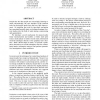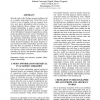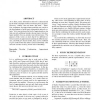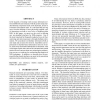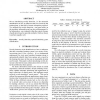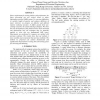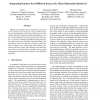ISMIR
2005
Springer
14 years 5 months ago
2005
Springer
Despite the fact that people are increasingly listening to music electronically, the core interface of the common tools for playing the music have had very little improvement. In ...
ISMIR
2005
Springer
14 years 5 months ago
2005
Springer
Musical works in the Western art music tradition exist in a complex, inter-related web. Works that are derivative or part of another work are common; however, most music informati...
ISMIR
2005
Springer
14 years 5 months ago
2005
Springer
Music information retrieval is characterized by a number of various user information needs. Systems are being developed that allow searchers to find melodies, rhythms, genres, an...
ISMIR
2005
Springer
14 years 5 months ago
2005
Springer
At its heart, music information retrieval is characterized by the need to find the similarity between pieces of music. However, “similar” does not mean “the same”. Theref...
ISMIR
2005
Springer
14 years 5 months ago
2005
Springer
In the majority of existing work in music information retrieval (MIR) the user interacts with the system using standard desktop components such as the keyboard, mouse or sometimes...
ISMIR
2005
Springer
14 years 5 months ago
2005
Springer
We are introducing novelty detection, i.e. the automatic identification of new or unknown data not covered by the training data, to the field of music information retrieval. Two...
MM
2005
ACM
14 years 5 months ago
2005
ACM
We report experiments on the use of standard natural language processing (NLP) tools for the analysis of music lyrics. A significant amount of music audio has lyrics. Lyrics enco...
VISUALIZATION
2005
IEEE
14 years 5 months ago
2005
IEEE
This paper presents our framework for music information retrieval and visualization (CoMIRVA). We focus on the functions for visualizing similarities between music artists or song...
ICMCS
2006
IEEE
14 years 5 months ago
2006
IEEE
Space requirement for storing indexes and performance for query processing are two critical issues in music information retrieval (MIR) system. To overcome difficulties in variabl...
ICDM
2006
IEEE
14 years 5 months ago
2006
IEEE
Efficient and intelligent music information retrieval is a very important topic of the 21st century. With the ultimate goal of building personal music information retrieval syste...
